Understanding Voles in House Walls: Insights and Solutions
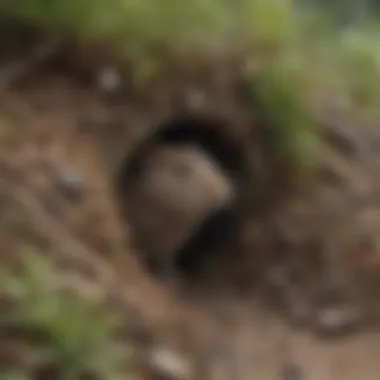
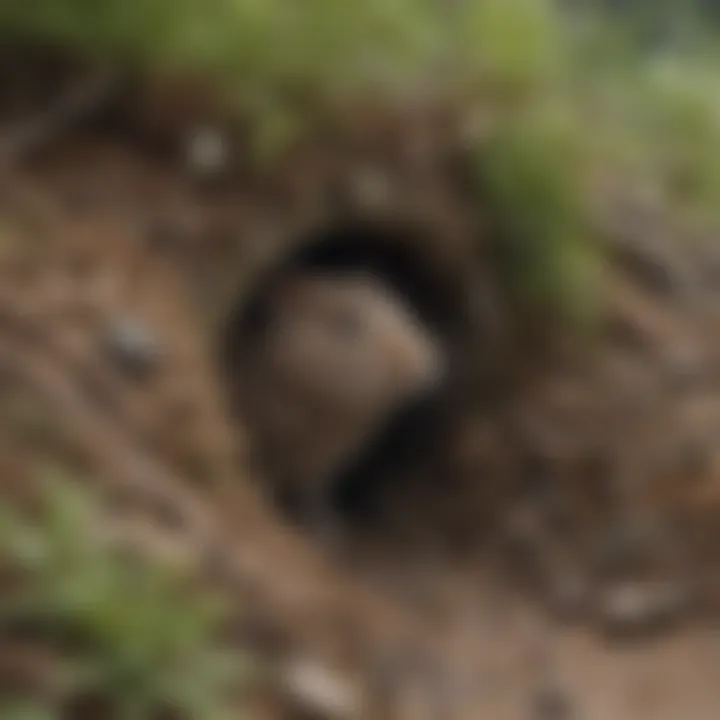
Intro
Voles are small, burrowing rodents that can create significant problems when they invade structures, particularly homes. Understanding their behavior and the signs of their presence can help homeowners manage an infestation effectively. This segment aims to illuminate the key aspects of voles, laying the groundwork for effective strategies for prevention and control.
Understanding the Pest
Identification
Voles are often confused with other rodents, such as mice or rats, but they have distinct characteristics. Their bodies are stocky, with short tails and small ears. Adult voles typically measure around five to seven inches in length. The two most common species are the meadow vole and the pine vole. The meadow vole has a grayish-brown fur coat, while the pine vole may appear darker and has a more shaggier fur.
Knowing how to identify these pests is essential for prompt actions to minimize damage.
Life Cycle
The life cycle of voles is rapid, which contributes to their potential to cause problems. Female voles can breed at just a few months old, and they may produce multiple litters each year. Each litter can consist of three to six young, which mature quickly. The high reproductive rate enables colonies to grow swiftly, which can lead to increased damage to structures and gardens if not managed properly. Voles often create extensive networks of tunnels and nests, which can be found in the insulation of house walls.
Pest Prevention Strategies
Environment Modification
To prevent an infestation, it is vital to modify the environment around your home. Voles thrive in areas with dense vegetation and ground cover. Keeping your yard well-maintained can deter them from making a home there. Simple actions include:
- Trimming back overgrown shrubs and grass
- Removing debris and wood piles
- Keeping mulch and compost manageable to avoid providing shelter
Taking these steps ensures your yard is less attractive to voles as they seek places to burrow.
Physical Barriers
Creating physical barriers can further reduce the likelihood of voles entering your home. This can include:
- Installing wire mesh or hardware cloth around the foundation of your house.
- Sealing gaps and cracks in walls, especially around vents and pipes.
- Ensuring that doors and windows are adequately sealed.
These proactive measures will help in creating a protective barrier against potential invaders.
Control Methods
Chemical Control
In cases where infestations occur, chemical solutions may be an option for control. Various rodenticides are available, but they should be used with caution. Always follow label instructions and consider the potential impacts on non-target species, including pets and beneficial wildlife. It is best to seek professional guidance before proceeding with any chemical treatments.
Biological Control
Biological control methods are increasingly popular among eco-conscious individuals. Natural predators, such as owls and hawks, can help regulate vole populations. Providing natural habitats for these birds can attract them to your area.
Another biological method includes using traps, which can capture voles without using harmful chemicals.
Investing in prevention and understanding the biology of voles can go a long way in protecting your home.
Finale
In summary, understanding voles and their behaviors is critical for homeowners. By taking preventive steps and utilizing effective control methods when necessary, you can mitigate the risks these pests pose to your home. The path to a vole-free environment is paved with knowledge and action.
For more insights and community discussions, explore Reddit or Facebook.
By gaining a deeper understanding and adopting these strategies, you can maintain a safe and healthy living space.
Foreword to Voles
Voles are small rodents often overlooked by homeowners. They have significant implications when they invade houses, particularly within walls. Understanding voles can help in identifying problems early. This section offers insights into their characteristics and species, laying a foundation for recognizing their presence and the potential need for control measures.
Characteristics of Voles
Voles are stocky rodents, typically about 4 to 10 inches long, including their short tail. Their fur is commonly brown or gray, helping them blend into their surroundings. These animals have small ears, a blunt snout, and a robust body. They primarily feed on grasses, plants, and seeds, making them a threat to gardens and landscaping. One notable behavior is their burrowing; voles create extensive tunnel systems underground, which can undermine the foundation of a home.
- Behavior: They are mostly active during twilight and dawn, foraging for food.
- Reproduction: Voles are known for their rapid reproduction rates. A single pair can produce multiple litters per year, each consisting of four to six young.
Common Species of Voles
While various vole species exist, two of the most commonly encountered types include the Meadow Vole and the Prairie Vole.
- Meadow Vole: This species is widespread across North America. It prefers moist habitats like fields and marshes. Its presence in urban settings can lead to infestations within structures.
- Prairie Vole: Unlike its meadow cousin, the prairie vole is often found in drier habitats, like grasslands and open prairies, but can also venture close to residential areas.
The ability to distinguish between these species can be valuable when considering management strategies. Understanding their habits aids in anticipating potential issues, like tunneling behavior or plant damage.
"Familiarity with vole characteristics enhances proactive measures, preventing infestations before they escalate."
In summary, a solid grasp of vole characteristics and species empowers homeowners to address vole issues effectively and maintain their living environments.
Voles and Their Habitat
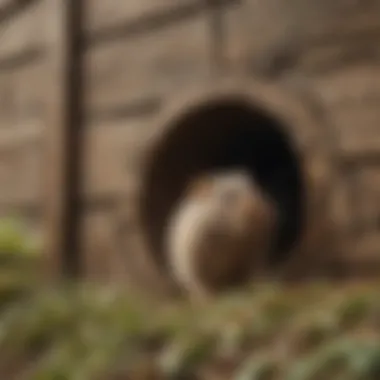
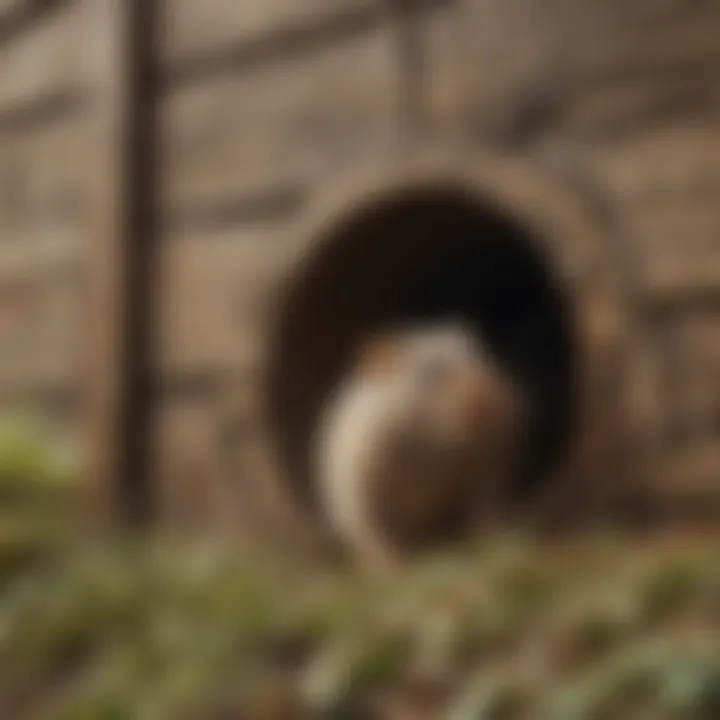
Understanding the habitat of voles is crucial for any homeowner facing an infestation. Voles are small rodents that thrive in various environments, whether natural or urban. Their ability to adapt to different surroundings directly affects how they interact with human residences. By gaining insight into their preferred habitats, one can more effectively mitigate the risks associated with an infestation.
Natural Environment of Voles
Voles are typically found in grassy fields, meadows, and woodlands. They prefer areas with dense vegetation, which provides cover and food. Their diet mainly consists of grasses, seeds, and roots. This natural environment allows them to create burrows, where they live and raise their young. Such burrowing habits are essential for their survival, as it protects them from predators.
- Burrowing Behavior : Voles dig complex tunnel systems and often create several entrances to their burrows. This tactic aids in escaping threats.
- Population Dynamics : The natural environment impacts the population density of voles. Favorable conditions can lead to rapid population growth, resulting in increased chances of them migrating to urban areas.
- Seasonal Habits : During colder months, voles may seek shelter closer to human structures since these areas tend to be warmer and provide easier access to food sources.
In essence, the natural habitat of voles is a crucial element to their adaptability. Homeowners should be aware of how these small mammals function in their environment to understand better why they may enter homes or buildings.
Adaptation to Urban Areas
Voles have demonstrated a remarkable ability to adapt to urban settings. As cities expand and encroach upon natural landscapes, voles find new opportunities for survival in human-dominated environments. Several key aspects contribute to their successful adaptation:
- Availability of Food: Urban areas often have gardens, parks, and landscaped yards that provide an abundance of food.
- Shelter Options: Voles can find numerous hiding spots within urban structures, from garden mulch to insulated walls.
- Reduced Predation: In cities, natural predators like hawks and foxes may be less prevalent, giving voles a safer environment to thrive.
By understanding how voles adapt to urban habitats, homeowners can take more precise preventive measures against infestations.
Homeowners should also note that this adaptation can lead to larger populations of voles in urban spaces, effectively increasing the risk of an infestation. This knowledge is not just informational but serves as a practical guide to manage and prevent vole-related issues effectively.
Signs of Vole Infestation
Identifying the signs of voley infestation is crucial for homeowners. Detecting these signs early can prevent major damage and health concerns. Voles are notorious for their ability to cause significant harm to structures, as well as for their rapid reproduction. Understanding the specific indicators of their presence enables homeowners to take prompt action.
Visual Indicators
Visual signs of voles include the presence of small holes in the ground, which typically measure about 1-2 inches in diameter. These holes often appear near landscape features such as trees, shrubs, or flower gardens. Additionally, voley activity can be marked by tracks and trails in vegetation. The trails may resemble well-worn paths in grass or dirt, which voles use frequently. Observing chewed plant material or gnaw marks on young trees and shrubs can also be a clear indication of voley presence.
Moreover, look for scattered piles of feces, which are small, dark, and approximately the size of a grain of rice. In seeing these signs, it is essential not to dismiss them as mere evidence of other rodents. Instead, they should be analyzed in conjunction with other indicators for a more accurate diagnosis.
Noise and Smell
Voles can also be detected through audible signs. Scratching noises coming from inside walls may suggest an active infestation. These noises often occur during dawn or dusk when voles are most active. Homeowners may also notice a musty odor emanating from the areas infested by voles, which can result from urine or decaying materials. It is vital to pay attention to any unusual smells, as they can indicate that an infestation is well underway.
Damage to Insulation and Wiring
One of the most concerning signs of voles is damage to insulation and wiring within walls. Voles have a natural instinct to gnaw on various materials, including plastic and electrical insulation. This behavior can lead to serious structural issues or even electrical hazards.
Homeowners should inspect insulation for signs of shredding or holes, as these may signify the presence of voles. Moreover, damaged wiring can pose a fire risk, making it imperative to address any signs of damage promptly. Regular inspection and maintenance of the home can mitigate these risks, ensuring a safe living environment.
"Detecting the signs of an infestation early can save homeowners from extensive damages and costly repairs."
In summary, recognizing signs of a vole infestation is key to effective management. Homeowners must remain vigilant in monitoring their properties for visual indicators, noise disturbances, and material damage. By doing so, one can take proactive measures to protect their home from further damage.
Access Routes: How Voles Enter Walls
Understanding how voles access the walls of homes is crucial for effective management and prevention strategies. Even minor gaps can allow voles to penetrate structures and create infestations. Recognizing these access routes helps homeowners take proactive measures to protect their properties.
Entry Points in Homes
Voles can enter homes through various entry points. These locations often include:
- Foundation Cracks: Small crevices in the foundation can provide sufficient space for voles to squeeze through. Inspecting the foundation regularly can help in identifying these issues early.
- Gaps Around Pipes: Spaces where pipes enter the home can also serve as gateways. Sealing these openings is an effective preventative measure.
- Ventilation Openings: Vents that lead to attics or crawl spaces can be another access route. Installing mesh screens over these areas can help deter voles from entering.
- Damaged Doors and Windows: Any cracks or gaps in the frames of doors and windows offer opportunities for voles to slip inside. Ensuring proper seals can mitigate this risk.
It is advisable for homeowners to conduct routine inspections for these potential entry points. Taking action to secure them can prevent voles from causing damage and compromising the integrity of the home.
Behavioral Patterns Leading to Infestation
Voles are creatures driven by instinct, which leads them to select environments conducive to their survival. Their behavior contributes significantly to how they invade areas like home walls. Some important behavioral patterns include:
- Foraging: Voles forage for food near their burrowing sites. If food is available close to a home, it increases the likelihood of them moving closer to residential structures. Keeping yards free of tall grass and debris can deter them from approaching.
- Social Structure: Voles often live in colonies. When one family finds favorable conditions, others may follow. Understanding this social behavior can help homeowners grasp the potential scale of an infestation.
- Nesting Habits: Voles tend to create nests close to their food sources, which can sometimes lead them into walls, especially if they find warmth or shelter inside. Ensuring that nesting materials are not left accessible around the home is also crucial.
By acknowledging these behaviors, homeowners can take necessary steps to limit food sources and nesting opportunities, thereby reducing the chances of infestation.
Potential Risks of Vole Infestation
Understanding the potential risks associated with vole infestations is crucial for homeowners. Voles may seem small and harmless, but they can cause significant problems in and around a house. Awareness of these risks enables effective planning and prioritization of management strategies. Homeowners who grasp the implications of an infestation can take proactive measures to mitigate potential damage, ensuring the safety and integrity of their living spaces.
Health Concerns
Voles can pose several health risks, primarily through the transmission of diseases. One important aspect is their droppings, which can carry pathogens that may lead to respiratory issues in humans. When voles are present, their feces can contaminate areas in and around the home, raising concerns about sanitation. In addition, voles are known to attract predators such as hawks and snakes, which also adds to the ecological dynamic that can indirectly impact human health.
Furthermore, the presence of voles can encourage other pests to invade, as they serve as a food source. Mice, for instance, thrive in the same environments as voles, potentially leading to a dual infestation scenario. This interconnectedness between species highlights the need for vigilance when dealing with voles in order to mitigate broader health risks that can arise from multiple infestations in close proximity.
Structural Damage
The risk of structural damage from a vole infestation cannot be overstated. Voles tend to gnaw on various materials, including wood and insulation. This damage can compromise the structural integrity of a house over time. Specifically, they may chew through wires, which not only creates an electrical hazard but can also result in costly repairs.
Additionally, insulation damage poses a dual threat. First, it diminishes a home’s energy efficiency, leading to increased heating and cooling costs. Second, damaged insulation can create conducive environments for moisture accumulation, which invites mold growth. Such issues worsen over time, necessitating more extensive renovations or repairs if not addressed quickly.
In summary, the potential risks associated with vole infestations extend beyond mere annoyance, warranting serious consideration by homeowners. The health and structural implications necessitate a proactive management approach to ensure the safety and longevity of one’s residence.
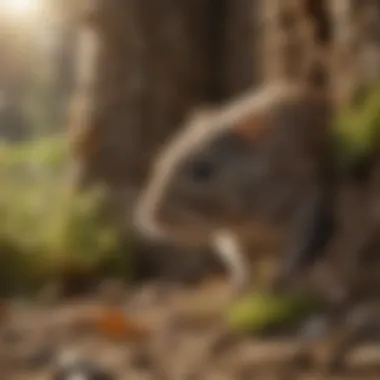
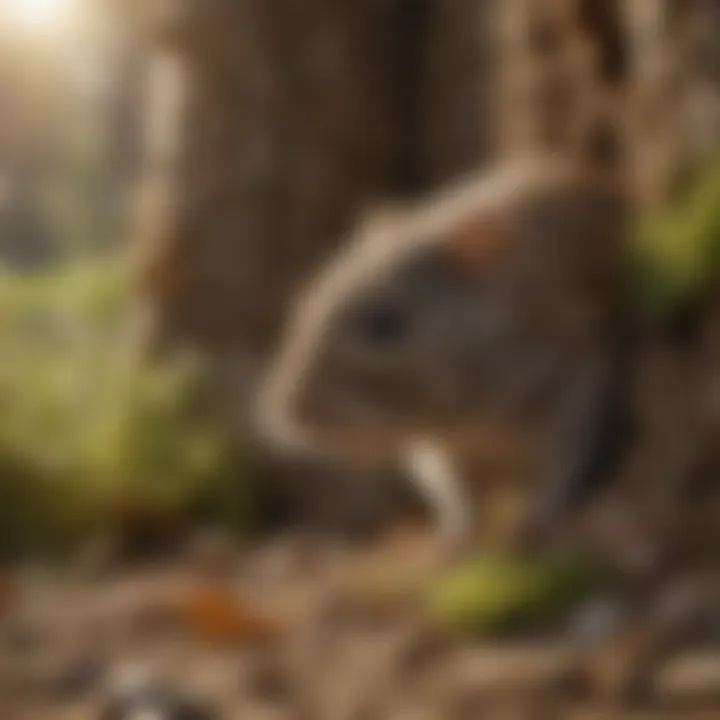
Ecological Impact of Voles
Understanding the ecological impact of voles is essential for a comprehensive view of their presence in our environments. While often seen as pests, voles play significant roles in maintaining ecological balance. Their interaction with various elements of the ecosystem contributes to both the health of the environment and the challenges posed to human habitats.
Role in the Ecosystem
Voles serve as important prey species for a range of predators, including owls, hawks, and foxes. This role establishes a vital connection within the food web. By sustaining these predator populations, voles help maintain diversity in wildlife. However, their population dynamics can impact vegetation and soil health as well. High vole numbers may lead to overgrazing, affecting plant growth and soil erosion. In consequence, land management professionals need to consider vole populations when planning ecological conservation efforts.
Interactions with Other Species
Voles interact not only with predators but also with other herbivores and plant species. They can influence the structure of plant communities through their feeding habits. For instance, voles may preferentially feed on certain grasses or forbs, shaping the plant composition of an area. This interaction can create noticeable effects on local biodiversity.
Moreover, voles can impact soil structure and nutrient cycling. Their burrowing habits aerate the soil and contribute to its health, promoting beneficial microbial activity. Conversely, an overabundance of voles may lead to significant plant losses, limiting food availability for other species.
Prevention Strategies
Prevention strategies play a crucial role in managing the presence of voles in homes. These measures can significantly reduce the likelihood of infestation and protect the integrity of structures. By proactively addressing environmental conditions and making necessary adjustments, homeowners can create a less inviting habitat for these pests. Consequently, the overall health and safety of the living space improve, preventing potential damage and costs involved in professional removal processes.
Home Maintenance and Repairs
Regular maintenance of the home is essential in preventing vole infestations. Homeowners should routinely inspect their property for potential entry points. These can include gaps in siding, holes around plumbing, and cracks in the foundation. Ensuring that these areas are sealed can deter voles from making a home within walls.
In addition to sealing entry points, it is important to check for damage in insulation. Voles may chew through insulation, which can compromise energy efficiency. Replacing any damaged insulation not only prevents heat loss but also creates an unwelcoming environment for voles.
Furthermore, proper ventilation in crawl spaces and attics should be maintained. Stagnant air can foster an environment conducive to pest infestations. By ensuring adequate airflow, the likelihood of attracting voles declines. This maintenance goes hand-in-hand with keeping the surrounding area free from debris, which could serve as concealment or nesting material for these rodents.
Landscaping Considerations
Landscaping also significantly impacts the prevention of vole infestations. Voles prefer areas that provide cover and food sources. Thus, maintaining a tidy landscape is vital. Lawns should be kept well-trimmed, and plantings should not overgrow.
Plant selection is another consideration. Certain plants, especially groundcovers or dense shrubs, can attract voles. Using less dense plants or redesigning gardens can make areas less appealing to these rodents. Homeowners might also consider incorporating plants that repel voles, such as marigolds or daffodils, which can deter them from approaching the property.
Additionally, avoid mulching heavily around trees and shrubs. Thick layers of mulch can provide the perfect hiding space for voles. Instead, a thinner layer or other ground covers can provide sufficient protection for plants while being less attractive to pests.
"Effective prevention measures are often more practical than dealing with infestations. Simple household repairs and thoughtful landscaping can make a significant impact."
Eco-Friendly Control Methods
In tackling the issue of voles within house walls, it is crucial to consider eco-friendly control methods. These approaches not only target the problem effectively but also emphasize safety for both the homeowners and the surrounding environment. Implementing environmentally responsible techniques reduces reliance on harmful chemicals, which could pose risks to pets, children, and local wildlife.
Using eco-friendly methods can also contribute to long-term solutions, as they often address the underlying conditions that favor vole infestations. This promotes a healthier ecosystem while maintaining the integrity of the home. Here, we will explore two principal methods: natural repellents and habitat modification techniques.
Natural Repellents
Natural repellents serve as an effective way to keep voles at bay. They can be used to deter voles from entering walls and other areas in the house. Some common natural repellents include:
- Peppermint oil: The strong scent tends to repel voles effectively. It can be mixed with water and sprayed around entry points.
- Castor oil: This oil can be applied to areas where voles commonly burrow. The unpleasant taste and smell can discourage them from making a home nearby.
- Garlic: The scent of garlic is equally unappealing to voles. Creating a spray with garlic and water can help provide a barrier.
- Predator urine: Using the urine of natural predators like foxes can signal danger to voles, prompting them to leave the area.
When using natural repellents, it is important to consider the application frequency. Regular reapplication is necessary, especially after rain, to maintain their effectiveness. Natural repellents offer a safe and sustainable alternative to chemical traps, ensuring a lower environmental impact.
Habitat Modification Techniques
Habitat modification is another effective method for controlling voles. This involves altering the environment around the house to make it less appealing to them. Here are key strategies:
- Maintain clean gardens: Regularly remove debris, such as leaves and tall grass, as voles find shelter in these areas.
- Trim vegetation: Keep shrubs and plants away from home walls. Dense foliage can create a perfect hiding spot for voles.
- Use fencing: Installing a wire mesh around gardens can act as a barrier. Ensure that the fence is buried a few inches underground to deter burrowing.
- Manage water sources: Voles are attracted to moist areas. Regularly check for leaks in irrigation systems and ensure proper drainage.
By implementing these habitat modification techniques, homeowners can create a less favorable environment for voles. Keeping landscapes tidy and inactive can significantly reduce the chances of an infestation, leading to a more comprehensive and effective control strategy.
"Preventing voles is often more effective than controlling them once they are established. Simple changes can make a big difference."
Professional Intervention
Professional intervention is often a crucial aspect of effective vole management within house walls. While homeowners can adopt various preventative measures and eco-friendly control methods, sometimes the complexity and severity of an infestation necessitate the expertise of pest control professionals. Their knowledge, tools, and experience make them an invaluable resource in addressing vole problems that may not be easily manageable through home remedies alone.
Engaging pest control services not only assures you that the infestation will be tackled efficiently but also reduces the risk of misidentifying or mishandling the issue. Here are some specific elements to consider regarding professional intervention:
- Expert Assessment: Professionals can accurately diagnose the extent and nature of the infestation, offering insights that an average homeowner might overlook.
- Targeted Solutions: They are equipped to implement targeted strategies that effectively manage voles while minimizing risks to human health and the environment.
- Long-Term Management Plans: Pest control services can provide guidance on ongoing prevention and monitoring, helping you to create a sustainable solution that protects your home in the future.
When to Call Pest Control
Knowing when to call pest control is essential for effective vole management. There are several key indicators that suggest the need for professional help. If you notice a significant number of signs related to vole presence that extend beyond minor evidence, it may be time to contact experts:
- Visible Signs of Infestation: If you regularly observe droppings, chewed insulation, or visible tunnels within your walls, these may indicate that the infestation is more than you can handle alone.
- Signs of Damage: If insulation and wiring show significant damage, or if you begin to smell unusual odors, this points to a severe problem that must be addressed immediately.
- Persistent Problems: If you have made multiple attempts to resolve the issue through DIY methods, but the problem persists or worsens, professional help should be considered.
"Addressing a vole infestation promptly can prevent unnecessary damage and health concerns. Don't hesitate to seek expert advice!"
What to Expect from Professionals
When you choose to engage pest control professionals for a vole infestation, it is beneficial to know what to expect. Their approach will typically include the following:
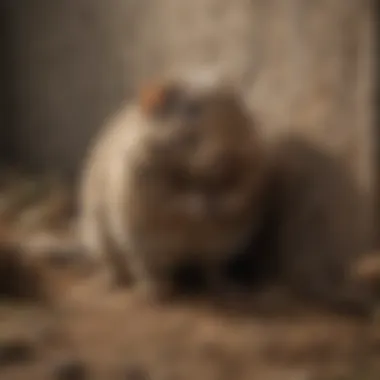
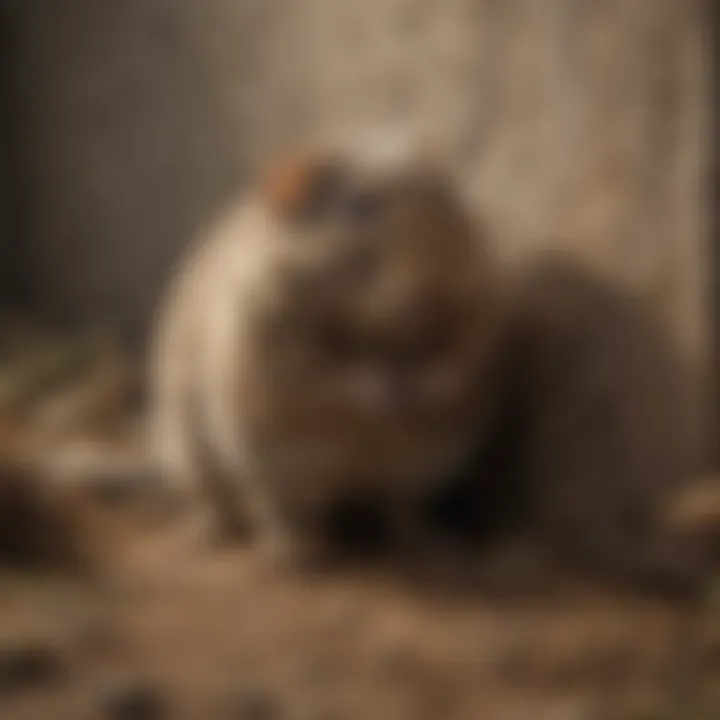
- Initial Inspection: The service will begin with a comprehensive inspection of your property, focusing on vulnerable areas where voles might enter and nest.
- Customized Treatment Plan: Based on their findings, pest control experts will develop a tailored treatment plan that may involve trapping, exclusion techniques, and eco-friendly methods.
- Follow-Up Visits: Most pest control services include follow-up visits to ensure that the treatment was effective and to monitor any potential re-infestation risks.
- Education and Advice: Professionals often provide valuable advice on vole behavior and effective prevention strategies to keep your home safe in the future.
Ultimately, working with pest control professionals not only addresses the immediate issues presented by voles but also equips you with essential knowledge for long-term management. This dual approach is vital for maintaining the integrity of your home and ensuring a healthy living environment for you and your family.
Long-Term Management of Voles
Long-term management of voles is crucial for homeowners seeking to maintain a safe and comfortable living environment. Understanding the patterns of vole behavior, their entry points, and the signs of their presence can empower individuals to take effective measures over time. Failing to address a vole infestation can lead to significant health risks and structural damage that may accumulate if left unchecked.
Monitoring and Ongoing Prevention
Monitoring is the first step in long-term management. Homeowners should regularly check for signs of vole activity, which includes droppings, chew marks, and burrowing paths. Implementing a schedule for regular inspections can help in early detection of potential issues. The more vigilant a homeowner is, the easier it is to prevent an infestation from escalating.
Preventive measures can include making structural improvements. Sealing gaps and holes around the foundation, windows, and doors can prevent voles from entering. Possible entry points should be identified and repaired promptly.
Furthermore, maintaining a tidy yard can discourage vole habitation. Keeping grass trimmed and removing brush piles can minimize the habitat they need for concealment. Another useful tactic includes using barriers, like wire mesh fencing, to protect specific areas of the garden.
Educating Homeowners
Educating homeowners is a vital aspect of long-term management of voles. By providing information about vole behavior, such as feeding habits and nesting preferences, homeowners can take proactive steps. Better understanding can lead to more effective preventative measures being implemented.
Communities should engage in educational outreach through workshops or informational pamphlets. Highlighting the differences between voles and similar rodents, like moles or mice, can prevent misidentification and ensure appropriate action is taken.
Additionally, online resources can be beneficial. Websites like Wikipedia and Britannica offer detailed information about voles that can assist homeowners in understanding the species they may be dealing with.
"Knowledge is the first step towards effective rodent management."
Case Studies of Vole Infestations
The topic of case studies regarding vole infestations is important for understanding the broader implications of these pests within house walls. Here, we examine various real-world examples to highlight key patterns, impact, and the lessons learned from these situations. By analyzing specific instances, homeowners and pest control professionals can gain insights into the behavior of voles and effective strategies for management. Case studies not only provide concrete evidence of infestation effects but also showcase the success or failure of particular control measures.
Residential Examples
In many residential areas, households have reported issues with voles infiltrating their walls and insulation. A significant case involved a suburban home where the owners noticed signs of disturbance in their garden. Initially, the family dismissed the signs as minor animal activity. However, as time passed, they experienced escalating problems with shredded insulation and gnawed wiring within the walls. This prompted them to investigate further.
Upon inspection, it was revealed that the voles entered through a small gap near the foundation. The guidance from a pest control professional indicated that such entry points can often go unnoticed. In this case, the homeowner learned about the importance of regular property checks, especially concerning vulnerable areas like basements and crawl spaces.
After identifying the problem, the family implemented multiple control methods. They combined habitat modification by removing dense vegetation close to the house, with the use of eco-friendly repellent plants. Eventually, their efforts resulted in a significant reduction in vole activity. This case illustrates the importance of vigilance and proactive approaches to prevent potential infestations.
Commercial Structures Affected
Commercial structures are not exempt from vole infestations. One notable instance took place in a small retail establishment that was experiencing unusual electrical issues. The owner thought these problems were related to old wiring. However, a thorough investigation revealed that voles were nesting within the walls and chewed through multiple cables. The damages caused substantial down times which led to revenue losses.
This case emphasizes the intricate connections between wildlife and commercial environments. The owner eventually decided to engage professional pest control to address the infestation. They took comprehensive measures, such as sealing entry points identified by experts and creating barriers that would deter future infestations.
Additionally, local regulations on pest management played a vital role in shaping their response. Understanding these regulations can guide business owners to ensure compliance while also protecting their property from pests. The lessons from such situations underscore the need for regular inspections in commercial spaces alongside a strategic pest management plan.
These case studies show that addressing vole infestations requires a multifaceted approach: prevention, timely identification, and collaboration with professionals.
Future Research Directions
As we gain more understanding about voles and their behaviors, it becomes evident that further research is crucial to address the challenges posed by these rodents within home structures. Exploring future directions in research involves examining specific behavior patterns and identifying innovative control techniques to manage vole populations effectively.
Understanding Behavior Patterns
An essential aspect of vole management lies in comprehending their behavior patterns. Voles are inherently social animals, often living in colonies. Understanding their social dynamics can offer valuable insights into how they navigate through spaces, including the walls of homes. Research can focus on their movement patterns, dietary preferences, and reproductive behaviors.
- Behavioral Keywords: For instance, studying the seasonal behaviors of voles can shed light on why infestations peak during certain times of the year. By leveraging this knowledge, homeowners can anticipate potential entry windows and take preventative measures.
- Colony Structure: Understanding how voles socialize and organize within colonies can lead to new strategies for disrupting their colonies, possibly reducing infestation rates.
Innovative Control Techniques
The second critical area of future research is the development of innovative control techniques. Current methods often lean towards chemical solutions, which may raise environmental concerns. Exploring alternatives can lead to safer, more sustainable options.
- Technological Solutions: With the advancement of technology, researchers are looking into electronic traps and deterrents that can reduce vole populations without harming other wildlife.
- Biological Controls: Additionally, examining the potential of biological controls, such as natural predators or competitive species, can yield eco-friendly solutions to managing vole populations.
"Innovative control techniques must prioritize environmental health to ensure a balanced ecosystem while addressing vole issues effectively."
By investing in these areas of research, not only can we find more effective strategies to manage voles in house walls, but we can also contribute to a more comprehensive understanding of rodent behaviors and their impact on urban living environments.
Closure
In the discussion about managing voles in house walls, understanding the key insights is paramount. Voles can be a persistent challenge for homeowners, but recognizing their behaviors, signs of presence, and the damage they can cause is vital for effective management. The goal of this article is to equip readers with knowledge to tackle vole-related issues with confidence.
Summary of Key Insights
The article emphasizes several significant points regarding voles in house walls:
- Identification: Knowing how to identify voles and their entry points is critical. Visual indicators such as burrows and droppings help in early detection.
- Health Risks and Damage: Voles pose health concerns through the potential spread of diseases. They can also cause substantial damage by chewing on insulation and wires, leading to costly repairs.
- Prevention and Control: Implementing effective prevention strategies is essential to manage vole populations. Regular home maintenance, landscaping modifications, and using natural repellents can substantially decrease the chances of an infestation.
- Professional Help: While eco-friendly control methods are encouraged, there are instances when professional pest control might be necessary. Knowing when to seek help can save time and resources.
In summary, awareness of voles’ habits and efficient management techniques forms the backbone of protecting homes from potential infestations.
Final Thoughts on Vole Management
The management of voles requires a proactive approach. It is not merely about removing these rodents; it involves understanding their habitat, adapting prevention strategies, and maintaining a vigilant stance. Homeowners should invest time in monitoring signs of voles and ensuring their home is less inviting to these pests.
Moreover, educating oneself and the community about the existence and behaviors of voles contributes positively to long-term management results. By fostering awareness, communities can collaborate on controlling vole populations effectively.
Ultimately, managing voles in house walls is intertwined with broader ecological understanding. Striking a balance between maintaining a pest-free home and respecting the ecological roles voles play can lead to sustainable outcomes.







